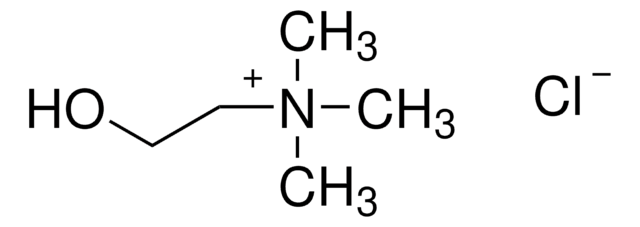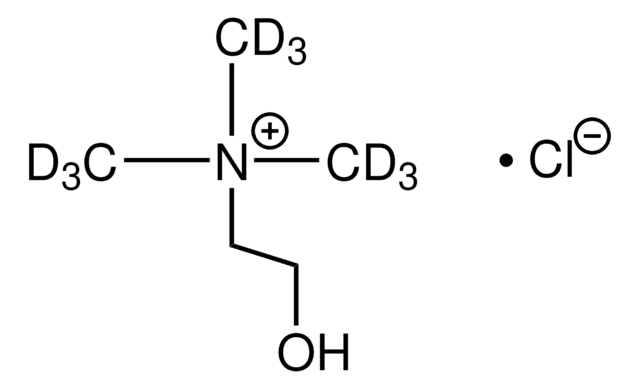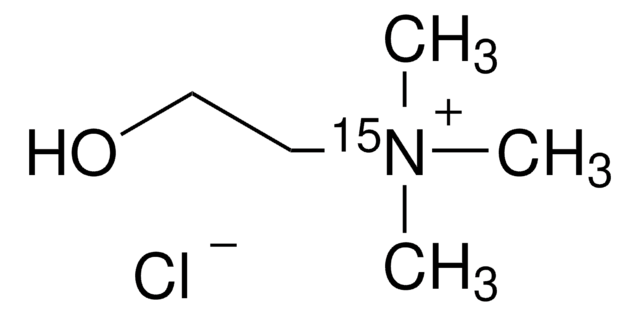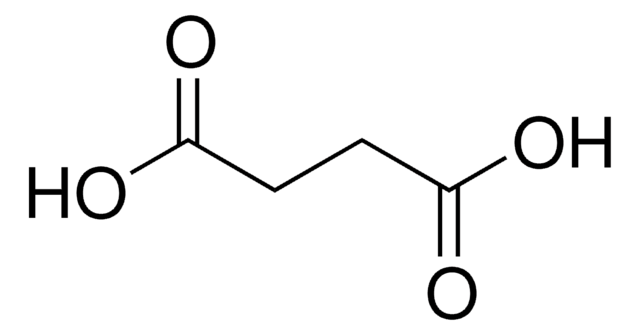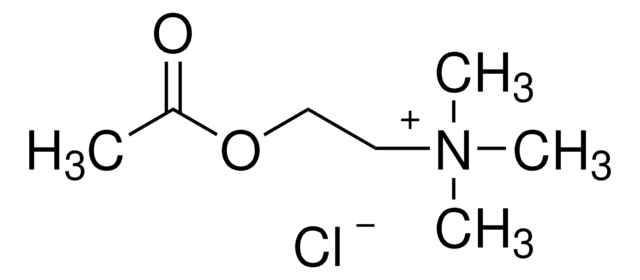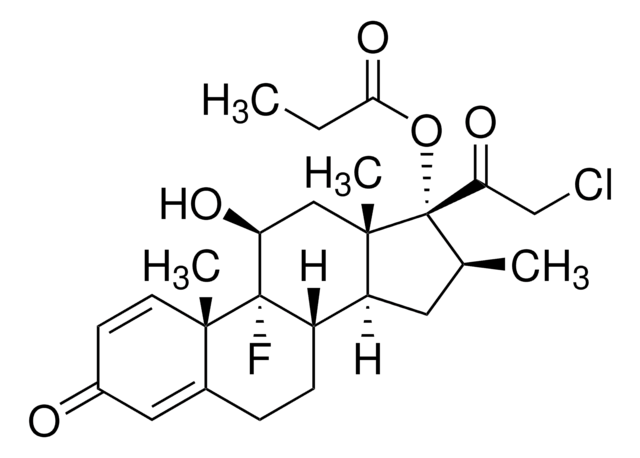1133547
USP
Cholinchlorid
United States Pharmacopeia (USP) Reference Standard
Synonym(e):
(2-Hydroxyethyl)trimethylammoniumchlorid
About This Item
Empfohlene Produkte
Qualität
pharmaceutical primary standard
Hersteller/Markenname
USP
mp (Schmelzpunkt)
302-305 °C (dec.) (lit.)
Anwendung(en)
pharmaceutical (small molecule)
Format
neat
SMILES String
[Cl-].C[N+](C)(C)CCO
InChI
1S/C5H14NO.ClH/c1-6(2,3)4-5-7;/h7H,4-5H2,1-3H3;1H/q+1;/p-1
InChIKey
SGMZJAMFUVOLNK-UHFFFAOYSA-M
Suchen Sie nach ähnlichen Produkten? Aufrufen Leitfaden zum Produktvergleich
Allgemeine Beschreibung
Anwendung
- Extraction of Bioactive Compounds: Choline chloride, combined with sucrose in natural deep eutectic solvents, facilitates the formation of aqueous biphasic systems. These systems are applied in drug extraction processes to improve efficiency and selectivity, particularly in pharmaceutical applications (Ghaffari et al., 2024).
- Extraction of α-Glucosidase Inhibitors: Utilizing choline chloride-based deep eutectic solvents significantly enhances the selective extraction of α-glucosidase inhibitors from waste seeds. This application is particularly valuable in the development of therapeutic agents for diabetes management, showcasing its versatility in pharmaceutical extraction processes (Liu et al., 2024).
Substrate
Hinweis zur Analyse
Ähnliches Produkt
Lagerklassenschlüssel
11 - Combustible Solids
WGK
WGK 1
Flammpunkt (°F)
Not applicable
Flammpunkt (°C)
Not applicable
Analysenzertifikate (COA)
Suchen Sie nach Analysenzertifikate (COA), indem Sie die Lot-/Chargennummer des Produkts eingeben. Lot- und Chargennummern sind auf dem Produktetikett hinter den Wörtern ‘Lot’ oder ‘Batch’ (Lot oder Charge) zu finden.
Besitzen Sie dieses Produkt bereits?
In der Dokumentenbibliothek finden Sie die Dokumentation zu den Produkten, die Sie kürzlich erworben haben.
Kunden haben sich ebenfalls angesehen
Unser Team von Wissenschaftlern verfügt über Erfahrung in allen Forschungsbereichen einschließlich Life Science, Materialwissenschaften, chemischer Synthese, Chromatographie, Analytik und vielen mehr..
Setzen Sie sich mit dem technischen Dienst in Verbindung.